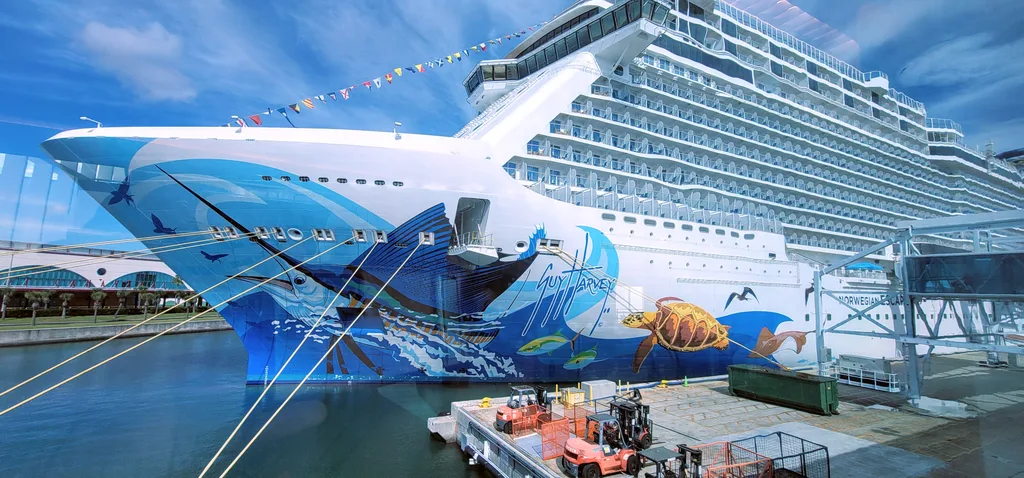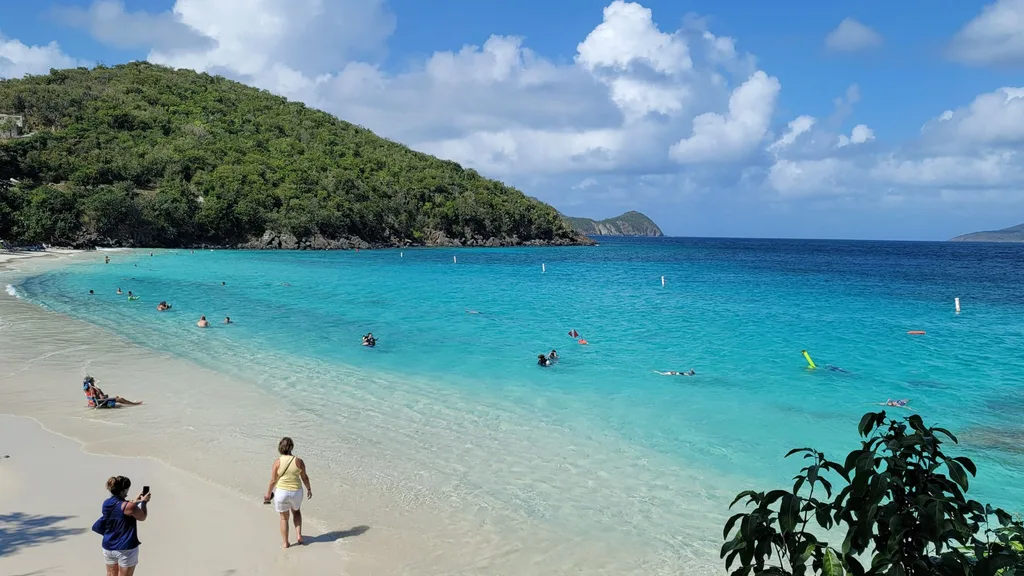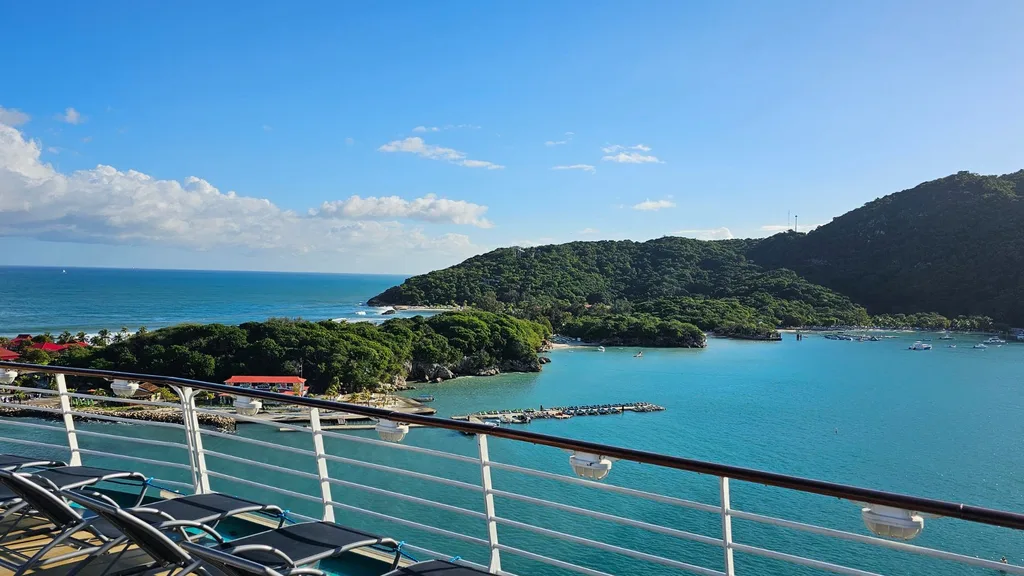Cruise ships are floating cities filled with dining, entertainment, and hidden spaces waiting to be discovered.
Without a plan, it’s easy to waste time wandering — but mastering cruise ship navigation unlocks a smoother, more enjoyable journey.
From embarkation‑day walkthroughs to interactive maps and secret shortcuts, the right strategies help you explore with confidence.
Whether you’re on a mega‑ship or a boutique vessel, knowing how to get around saves time, reduces stress, and lets you focus on making memories.
Understand the Basics of Cruise Ship Layout to Navigate with Ease
Every cruise ship follows a basic structure, which, once understood, makes navigation much easier.
Cruise ships are generally divided into:
- Decks: The ship is made up of multiple levels, called decks, which are stacked vertically.
They are often numbered from the bottom up, though they might have unique names.
- Cabin Areas: Passenger cabins are usually clustered together across several decks.
Knowing where your cabin is in relation to key amenities like elevators, staircases, and public spaces is essential.
- Public Spaces: Areas such as restaurants, theaters, lounges, and pools are typically concentrated in central parts of the ship and can be found across multiple decks.
- Directional Terms: Understanding terms like forward (front of the ship), midship (middle), and aft (rear) is crucial when reading maps or following signs.
Memorize These Navigation Tips Early to Save Time Onboard
- Dining Areas: Know the location of the main dining rooms, buffets, and specialty restaurants relative to your cabin.
- Pool Decks and Outdoor Spaces: Pools, sports courts, and sundecks are typically located on the top decks.
- Entertainment Zones: Theaters, casinos, and lounges are usually concentrated on specific decks in the midship area.
- Cabin Location: Knowing your cabin’s proximity to landmarks like staircases or unique decorations makes returning easier.
Use Maps, Signs, and Technology to Confidently Navigate Your Cruise Ship
Cruise ships are packed with tools to help you get oriented quickly.
Here’s a rundown of what’s available:
Printed and Digital Deck Plans
- Pocket Maps: When you first board, you might receive a printed map of the ship that highlights major areas and amenities.
- Stateroom Maps: You’ll often find a detailed map of the ship in your stateroom. Take a few minutes to study it and note where key areas are in relation to your cabin.
- Digital Apps: Most cruise lines now offer apps that include interactive maps. These are especially handy since they often include step-by-step directions and event schedules.
Click for Exclusive Offers on Top Cruise Lines!

Interactive Touchscreen Displays
On many larger ships, such as Royal Caribbean’s Oasis-class or Norwegian’s Breakaway Plus-class, you’ll find touchscreen kiosks located near elevators and other high-traffic areas.
These displays allow you to:
- Search for specific venues (like restaurants or theaters) and get directions.
- View deck plans in detail, showing all amenities and cabins.
- Check real-time updates on activities, showtimes, and restaurant availability.
These screens are lifesavers, especially on larger vessels with over a dozen decks and hundreds of features.
Explore Your Cruise Ship with Smart Strategies for Stress‑Free Navigation
One of the most enjoyable parts of embarking on a cruise is the initial exploration.
Use embarkation day to get acquainted with the ship’s layout:

Grab Your Ticket to Paradise with These Deals!
Embarkation Day Exploration Tips
- Start with a Self-Guided Tour: After settling into your cabin, take a leisurely walk through the ship.
Start from the top deck and work your way down, or vice versa, depending on where your cabin is located.
- Focus on High-Traffic Areas First: Familiarize yourself with central zones like the main dining room, buffet, pool deck, and theater.
These are areas you’ll likely visit frequently.
- Scout Out Quiet Areas: If you prefer a quieter environment, take note of areas like the library, adult-only decks, or lesser-known lounges.
- Map Out Your Dining Choices: Dining is a big part of cruising. Locate where the various restaurants are, especially if you’ve booked specialty dining.
Check how far they are from your cabin and consider which elevators or staircases are the most direct routes.
- Learn the Shortcuts: Some areas of the ship are more easily accessible via certain routes.
For example, if you’re on a mega-ship, there might be hidden staircases or less-used hallways that can help you avoid crowded zones.
Use Deck Plans to Quickly Find Dining, Entertainment, and Amenities
Deck plans can seem confusing, but once you know how to read them, they become invaluable:
- Numbered Decks: Each deck is typically assigned a number or a name.
Lower decks are closer to the waterline, while higher decks are near outdoor spaces and pools.
- Color-Coded Sections: Public areas, staterooms, and other amenities are often color-coded.
For instance, dining areas may be marked in red, entertainment zones in blue, and cabins in green.
- Icons and Symbols: Familiarize yourself with the icons representing amenities like elevators, restrooms, and emergency exits.
Knowing these symbols can save time when navigating.
Unlock Your Dream Cruise with Exclusive Online Deals!

Leverage Cruise Ship Tech Tools for Faster, Easier Navigation
Cruise lines have invested in technology to make navigation more user-friendly:
- Cruise Line Apps: Many cruise lines have apps that provide more than just a map.
You can view dining menus, book shore excursions, check daily schedules, and even chat with other guests.
Popular examples include:
- Carnival’s Hub App: Features an interactive ship map, dining options, and event schedules.
- Royal Caribbean’s Royal iQ App: Offers a digital deck plan and directions.
- Norwegian’s Cruise Norwegian App: Includes a detailed map and step-by-step navigation.
- Interactive Kiosks: As mentioned earlier, interactive touchscreen displays are great tools for navigating mega-ships.
They provide real-time directions, venue searches, and even updates on activities or restaurant wait times.
Navigate Key Cruise Ship Zones to Maximize Your Onboard Experience
Now that you have the basics down, let’s focus on the most important areas of the ship:
Dining Venues
Finding the dining venues can be tricky since they’re often spread across different decks:
- Main Dining Room: Typically located on the lower decks, midship. It’s usually accessible from multiple staircases and elevators.
- Specialty Restaurants: These can be scattered throughout the ship.
On larger vessels, they might be on higher decks with views or tucked away in quieter corners.
- Buffets: Often located near the pool deck and offer both indoor and outdoor seating.
If you’re looking for a quick bite, knowing the closest buffet entrance is a time-saver.
Entertainment and Leisure Areas
Entertainment venues are usually grouped together:
- Theaters: Often found in the forward or aft sections of the ship, sometimes with entrances on multiple decks.
- Casinos: Typically located near other nightlife options like bars and lounges, usually midship.
- Lounges and Clubs: Depending on the ship’s size, these may be spread across several decks or concentrated in one area like a promenade.
Outdoor Spaces
Navigating outdoor decks can be challenging due to open layouts and multiple levels:
- Pools and Sundecks: These areas are typically on the highest decks and can have various levels connected by staircases.
- Sports Courts and Running Tracks: Often found near the back (aft) of the ship or in a separate, less crowded zone.
Apply Pro Navigation Tips to Save Time and Avoid Crowds
Even if you have all the maps and apps, a few extra tips can make navigating a breeze:
- Landmarks and Visual Cues: Memorize specific landmarks near your cabin—this could be a unique piece of artwork, a sculpture, or a distinctive color scheme in the hallway.
- Elevator Banks: Cruise ships typically have multiple elevator banks. Learn which one is closest to your cabin and where it leads.
Some elevators only go to specific decks, so it’s helpful to know which one to use for specific destinations.
- Staircases vs. Elevators: While elevators can get crowded during peak times (e.g., just before dinner), staircases are often quicker if you’re only going up or down a few decks.
- Deck Walkthroughs: Take some time early in your cruise to walk through different decks and explore shortcuts.
Some cruise ships have hidden walkways that bypass crowded areas.
Overcome Common Cruise Ship Navigation Challenges with Ease
Even with all the tools and tips, you might still run into some challenges.
Here’s how to deal with the most common ones:
Understanding Directions (Forward, Midship, Aft)
You’ll hear directional terms like forward (front of the ship), midship (middle), and aft (back) frequently:
- Using Cabin Numbers: Many ships organize cabins in ranges that indicate their position.
For instance, cabins numbered 1000-1500 might be forward, while 2000-2500 are aft.
- Hallway Colors: On some ships, hallways leading to cabins are color-coded or themed differently depending on whether they are forward, midship, or aft. Use this to your advantage when navigating.
Navigating Multiple Decks
Large cruise ships can have dozens of decks, but not all are accessible to passengers:
- Identify Key Decks: Early in your cruise, identify which decks house the main amenities.
For example, you might note that Deck 6 has the main theater, while Deck 14 is where the pools are.
- Shortcuts Between Decks: On some ships, certain staircases provide quicker access to specific areas, like a hidden staircase connecting the spa and the pool deck.
Language of Navigation
Cruise ships often use unique language for directions. For example, you’ll hear terms like “starboard” (right side) and “port” (left side).
Understanding these nautical terms can be helpful when reading signs and maps.
Navigate Mega‑Ships with Confidence and Discover Hidden Shortcuts
Mega-ships like Royal Caribbean’s Oasis-class and MSC’s Meraviglia-class vessels are essentially floating cities, and navigating them presents its own challenges:
Neighborhoods and Zones
Mega-ships often organize amenities into themed neighborhoods:
- Royal Caribbean’s Central Park and Boardwalk: These outdoor-themed zones make it easier to orient yourself.
You’ll know that dining is concentrated in Central Park, while family activities are on the Boardwalk.
- MSC’s Galleria: A central promenade area that serves as a hub for shopping, dining, and entertainment.
Multiple Deck Entrances and Skywalks
Some mega-ships have bridges or walkways connecting areas that span multiple decks.
These shortcuts can save time and help you avoid crowded elevators.
Get Help Fast When You’re Lost on a Cruise Ship
Despite your best efforts, there may still be moments when you feel lost.
Thankfully, help is always nearby:
- Ask the Crew: Crew members are stationed throughout the ship and are more than happy to assist.
Whether it’s finding a restaurant or locating your cabin, they’re your best resource.
- Follow the Signs: Directional signs are placed strategically near elevators, staircases, and in corridors.
These signs often include arrows pointing to major areas like pools, theaters, and restaurants.
- Fellow Passengers: Don’t hesitate to ask other guests for help.
Most passengers are friendly and might even share some useful tips they’ve discovered during their cruise.
Enhance Your Cruise Experience by Mastering Onboard Navigation
By the time you’ve explored the ship and identified key landmarks, navigating will become second nature.
A well-planned approach to learning the layout will reduce stress, save time, and help you fully enjoy your cruise experience.
Imagine confidently strolling to dinner, finding the best sunbathing spots before they’re taken, or quickly locating that hidden lounge everyone’s been talking about.
By mastering the art of cruise ship navigation, you’ll be free to focus on what really matters: relaxing, making memories, and enjoying everything your cruise has to offer.
Follow Your Path to Stress‑Free Cruise Navigation and More Enjoyment
Getting lost on a cruise ship is a rite of passage for many first-time cruisers, but with the right tools, strategies, and a bit of practice, you can become a seasoned navigator.
From digital maps and touchscreens to strategic exploration and good old-fashioned asking for directions, finding your way around a cruise ship is easier than it first appears.
The more familiar you become with the ship’s layout, the more time you’ll have to enjoy the pools, entertainment, and delicious dining options that are waiting for you.
So the next time you embark on a cruise, take a deep breath, grab a map, and start exploring.
FAQ – Navigate Cruise Ships with Confidence Using Smart Mapping Strategies
How Can I Learn a Cruise Ship’s Layout Quickly?
Start with a self‑guided tour on embarkation day to familiarize yourself with key areas.
Use printed deck plans, stateroom maps, and the cruise line’s mobile app for reference.
Focus on high‑traffic zones like dining rooms, theaters, and pool decks first.
Identify quiet areas and shortcuts to avoid crowds during peak times.What Are the Best Tools for Navigating a Cruise Ship?
Cruise line apps often include interactive maps and step‑by‑step directions.
Onboard touchscreen kiosks provide real‑time venue locations and activity updates.
Printed pocket maps and stateroom maps are useful for quick reference.
Color‑coded deck plans help you locate dining, entertainment, and amenities faster.How Do I Avoid Getting Lost on a Mega‑Ship?
Break the ship into zones or neighborhoods to make navigation easier.
Learn the location of key landmarks like Central Park or the Boardwalk on Royal Caribbean ships.
Use bridges, skywalks, or hidden staircases to bypass crowded areas.
Memorize which elevator banks serve specific decks for faster movement.What Should I Do If I Get Lost Onboard?
Ask a crew member for directions—they are trained to assist guests.
Follow directional signs near elevators and staircases to major venues.
Use the cruise line’s app to pinpoint your location and find the fastest route.
Don’t hesitate to ask fellow passengers for help—they may share useful tips.How Can I Save Time Navigating Between Activities?
Plan your day around activities located near each other to minimize travel time.
Use less‑crowded staircases during peak elevator hours.
Memorize visual cues and landmarks near your cabin for quick returns.
Identify direct routes between popular venues like the theater and dining rooms.BONUS: What Navigation Tips Help Avoid Crowds?
Dine during off‑peak hours to avoid congested buffet and restaurant areas.
Use outer deck walkways to move between forward and aft sections.
Attend shows in smaller venues for easier seating and less foot traffic.
Explore the ship during port days when most passengers are ashore.BONUS: How Can I Use Deck Plans to Enhance My Cruise Experience?
Study the deck plan before boarding to prioritize must‑visit areas.
Highlight locations of interest like specialty restaurants or adult‑only lounges.
Mark emergency exits and muster stations for safety awareness.
Use the plan to discover hidden spots like observation decks or quiet lounges.









